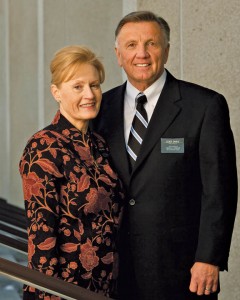Senior Missionaries in Mormonism
Although most Mormon missionaries are young, not all of them are. Many Mormons decide to go on missions after their retirement. This late mission may be their first one, it may not be. But whether they served missions when they were young or not is unimportant – they have a desire to serve in the mission field late in life, too. These missionaries are called, as a group, senior missionaries.Senior missionaries always go with companions, much like the young (and better-known) Mormon missionary. However, young missionaries are always unmarried, while many senior missionaries are married. Therefore, the companion is usually their spouse. Single retired women may also serve missions and may choose a female companion.
 The missions of younger missionaries tend to be proselyting ones only, where their role is to preach the gospel to all who listen. Senior Mormon missionaries have more choices. They can serve missions that are part-time and local. For example, they might volunteer for Church humanitarian projects. Or they can act as staff for genealogy (family history) libraries, or the visitors’ centers of Mormon temples.
The missions of younger missionaries tend to be proselyting ones only, where their role is to preach the gospel to all who listen. Senior Mormon missionaries have more choices. They can serve missions that are part-time and local. For example, they might volunteer for Church humanitarian projects. Or they can act as staff for genealogy (family history) libraries, or the visitors’ centers of Mormon temples.
Or they can go on full-time missions. Full-time missions for seniors can last one year, eighteen months, or 23 months. But the full-time mission of a senior missionary is still not automatically a proselyting one. Other kinds of full-time missions are open to them, especially if they have unique and useful skills – like expertise in the medical field, or in a foreign language. Senior missionaries might go on humanitarian missions, where they might give medical assistance to a community, or help them get food and clean water. Or, they can go on leadership missions. The purpose of a leadership mission is to train local Mormons in being better leaders in the Church – and leadership missions are assigned especially to areas where Mormonism is still very new.
Senior missionaries, like their younger counterparts, spend time in a Missionary Training Center. They are assigned to specific missions, under specific Mission Presidents. Unlike young missionaries, however, they may also report to someone else – someone who watches over their particular kind of mission. For example, if a senior couple serves a humanitarian mission, they’ll also work with the humanitarian program of the Mormon Church.
Like all missionaries, young or old, male or female, senior missionaries must pay their own way to go on a mission. Many save up for years. And if they find themselves financially (or physically) unable to go on a mission, seniors are encouraged to look for ways to serve locally. Indeed, all Mormons are encouraged to serve – service brings happiness and is pleasing to the Lord.
That service is happiness would seem to be evidenced by how enthusiastic seniors are about serving missions. The Church allows seniors to go on multiple missions, if they’d like, and many do. This does mean separation from their family and friends, but they often take time off between missions to reunite with family.
Often, senior missionaries can choose what kind of mission they’d like to go on – and sometimes even where. They are always encouraged to go, and their years of expertise and faith are always needed in the Mormon mission field.